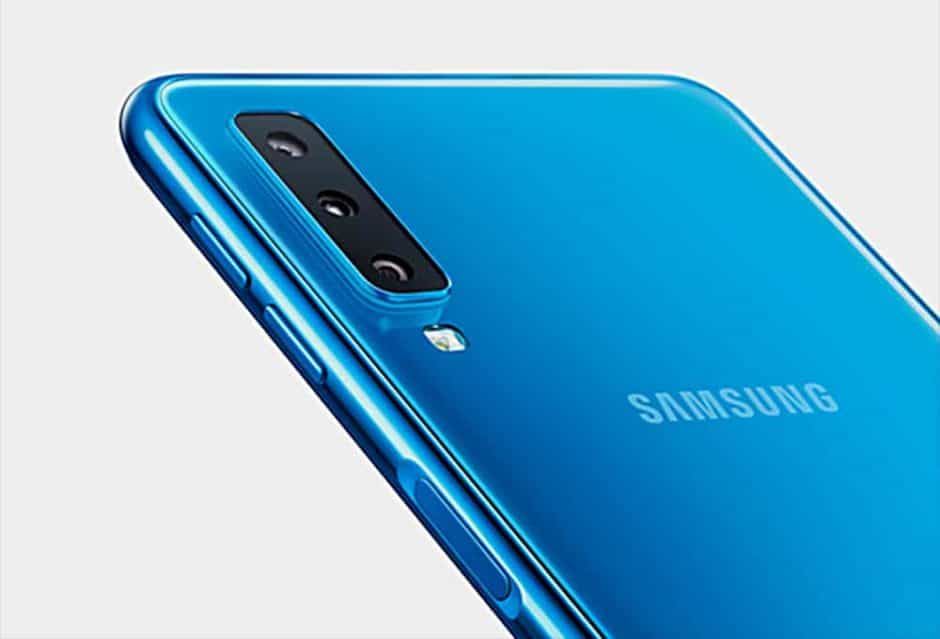Galaxy A7 one-ups Apple with three-camera smartphone

While the camera upgrades have some Apple fans considering paying the price of a MacBook for an iPhone, Samsung announced a three-camera smartphone today that will retail for about $400.
While Apple is reportedly on track for a three-camera iPhone sometime next year, the Samsung Galaxy A7 2018 joins Huawei’s P20 Pro as the only handsets to feature a third rear-facing lens.
The Galaxy A7 will be for sale in Europe and Asia this fall with no U.S. release date yet announced. The announcement comes before a planned Oct 11 product launch, meaning Samsung could be saving a premium handset featuring a rumored four cameras for the big reveal.
Galaxy A7: Decent camera specs for budget shoppers
A third camera on a mid-range Samsung phone is probably not enough to convince a serious iPhone photographer to switch. But the camera capabilities need only be given faint praise for a number of budget shoppers to consider the A7.
Apple’s iPhone XS and XS Max this week are hitting the doorsteps of eager users who pre-ordered them. The new iPhones are Apple’s priciest yet, ranging from $999 to more than $1,400 depending on the model.
The $400 price tag could give Samsung an edge in markets like India and China, where many see the iPhone as too expensive.
Here are the Galaxy A7 camera specs:
- 24-megapixel main rear-facing f/1.7 wide-angle lens.
- 8MP ultra-wide f/2.4 lens with 120-degree view.
- 5MP depth lens, which will work with the 24MP camera to give portraits an adjustable background blur, a computational version of bokeh.
- 24MP front-facing camera for selfies that will also feature adjustable depth of field.
- Pixel-binning, which combines information from four pixels into one for supposed quality boosts to exposure, color, and detail. Samsung says its pixel-binning will improve pictures made in low light.
Indicators in the supply chain hint at several smartphones in the pipeline that feature multiple cameras. There are even prototypes by futuristic camera company Light that host seven and nine lenses.
This is exciting for photographers who find they can rely more on their phone cameras to supplement their work with conventional cameras. The extra cameras, coupled with ever-improving sensors, can boost quality and add telephoto reach.
The extra lenses can also bolster augment reality tech in each camera. There are even privacy implications as more cameras can record more detailed and highly sought after data on its users.
Design snobs, already annoyed by the size of camera bumps, could be inconsolable in a couple of years.


